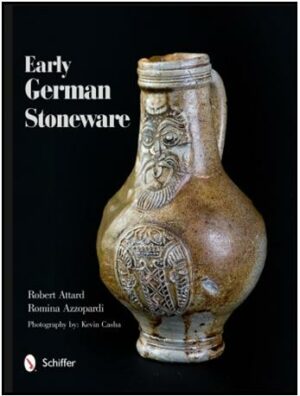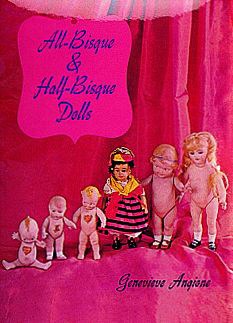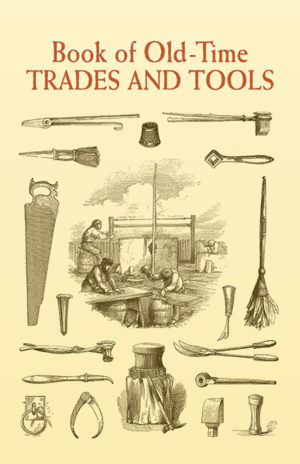Temporarily out of stock
165,000-170,000 words including Foreword; Acknowledgments; a personal recollection by Henry Arnhold of his family as collectors and art patrons in Dresden ; Essay on the wider trends in collecting European porcelain from 1900 to 1960 by Sebastian Kuhn; Essay on the Arnholds as collectors of modern art in Dresden from 1914 to 1945 by Heike Biedermann; appendices; one map; entries to accompany each of 389 objects in the main catalogue presentation divided into 6 main sections arranged by function/form, including technical captions, commentaries and scholarly apparatus; section opener texts; brief identifying captions for approximately 690 supporting images; Bibliography and in ex An invaluable source of reference for dealers, collectors, scholars, museum professionals and all those with an interest in eighteenth-century Meissen porcelain and European decorative arts
Publication accompanies a major exhibition opening at The Frick ollection in Spring 2008 Features colour illustrations of more than 400 pieces of Meissen porcelain, the majority dating from the early period of the royal factory 1710-1740 Includes catalogue entries, commentaries and scholarly apparatus The Arnhold porcelain collection is the most important of the great pre-war Meissen collections to have survived intact, remaining with the descendants of the original collectors. Most of the pieces date from the first decades of the royal factory established by August II, elector of Saxony and king of Poland, in 1710. Featuring a broad range of early works—much of it experimental —the collection includes large vases, table services, tea, coffee, and chocolate ervices, large and small figures, and comparative pieces in silver, serpentine glass and Asian ceramics. A wide range of standard and experimental decoration characterizes the collection, ranging from Huguenot ornament and French genre subjects to landscapes, seascapes, and chinoiserie decoration. Particularly noteworthy is the large collection of “Hausmalerei,” that is, enamelling and gilding by independent artists working outside the factory.
Most of the pieces in the collection were bought in and around Dresden by Heinrich and Lisa Arnhold, during the period 1926-35, and most have royal or significant provenance. Guided by such leading dealers of the day as M. Solomon, Arthur Wittekind, and Hermann Ball, the Arnholds were active buyers at the auctions of the Ostermann, Goldschmidt, Mühsam, and von Born collections. The Arnhold collection was brought to America in the 1940s, ahead of the family’s move from Dresden. Since 1974 Henry Arnhold has continued the tradition of collecting Meissen, expanding the depth and range of his holdings. This is seen most strongly in his acquisition of early Meissen stoneware (the factory’s so-called red porcelain, produced only from 1710 to 1713), white porcelain with underglaze blue decoration, never a feature of the original collection, and the recent acquisition of two dozen large and small figures and groups mostly modelled by the leading Meissen sculptor Johann Joachim Kändler (1706– 1775), who was appointed court sculptor in Dresden in 1730 and became Modellmeister at the Meissen factory in 1733. The volume also contains major essays by Sebastian Kuhn, who studies the wider trends in collecting European porcelain between 1900 and 1960, in Europe and America, and by Heike Biedermann, who looks at the Arnholds as collectors of modern art in Dresden from the year of their marriage in 1914 until 1935. The catalogue is introduced by a personal recollection by Henry Arnhold of his family as collectors and art patrons in Dresden and how the porcelain collection was created. The volume also includes appendices and a bibliography.
AUTHOR:
Maureen Cassidy-Geiger is Curator of the Arnhold Collection in New York, Guest Curator at The Frick Collection, and Guest Curator at the Bard Graduate Center, for the forthcoming exhibition there, Fragile Diplomacy: Meissen Porcelain for Foreign Courts.
Sebastian Kuhn is a Director of the European Ceramics and Glass Department, Sotheby’s, London.
Heike Biedermann is a curator at the Gemälde Galerie Neue Meister, Staatliche Kunstsammlungen Dresden.
Foreword by Anne Poulet, Director, The Frick Collection
SELLING POINTS:
Publication accompanies a major exhibition, opening at the Frick collection in Spring 2008, of the most important of the great pre-war Meissen collections to have survived intact and remaining with the descendants of the original collectors
Features colour illustrations of more than 400 pieces of Meissen porcelain, the majority, much of it experimental, dating from the early period of the royal factory 1710-1740, including large vases, table services, tea, coffee, and chocolate services, large and small figures, and comparative pieces in silver, serpentine, glass and Asian ceramics
Includes catalogue entries, commentaries, scholarly apparatus, appendices and a bibliography
Contains major essays by Sebastian Kuhn, who studies the wider trends in collecting European porcelain between c. 1900 and 1960, in Europe and America, and by Heike Biedermann, who looks at the Arnholds as collectors of modern art in Dresden from the year of their marriage in 1914 until 1935l
Introduced by a personal recollection by Henry Arnhold of his family as collectors and art patrons in Dresden and how the porcelain collection was created
1060 colour & 15 b/w illustrations
ISBN: 9781904832447
Author: CASSICY-GEIGER MAUREEN
Format: Hardcover
Publication date: 20/08/2008
RRP: $420.00
Pages: 800
Dimension: 279mm X 229mm
Imprint: Giles









